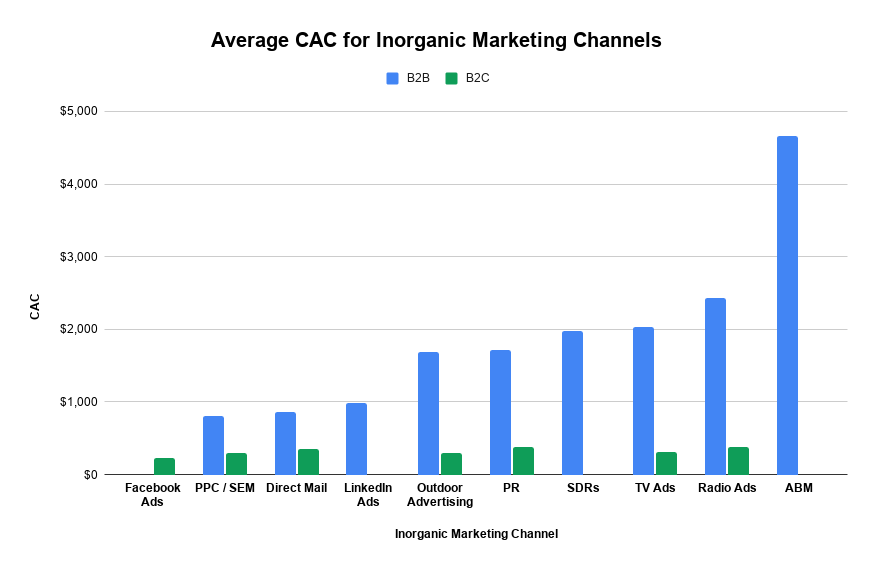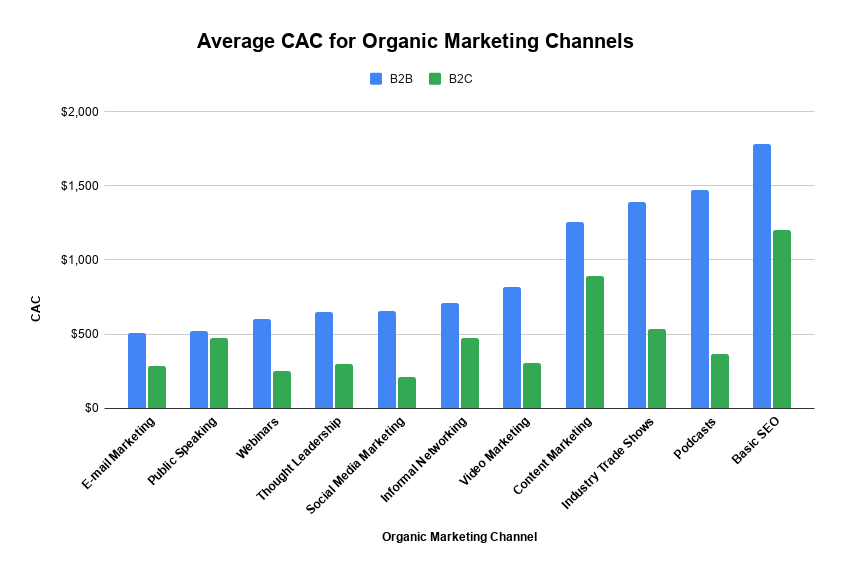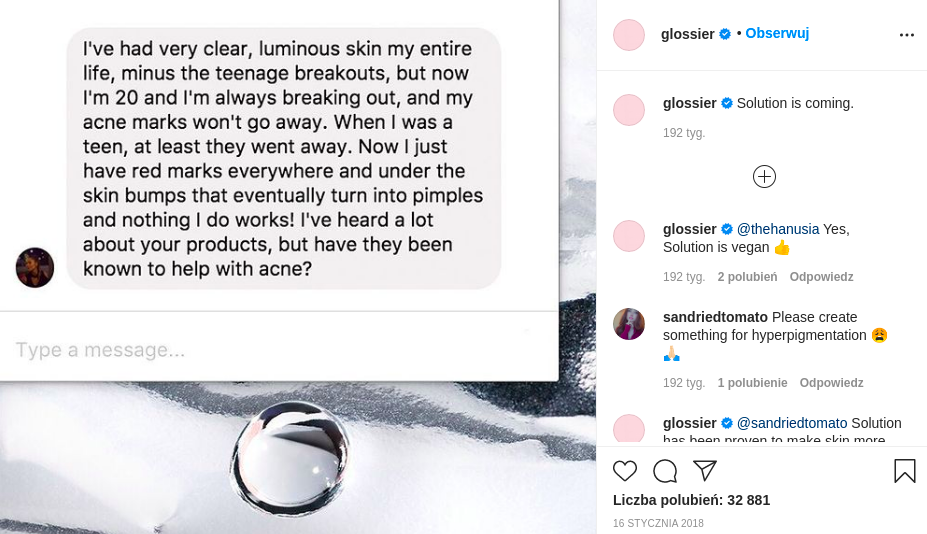How Can Social Media Help Upcoming D2C Businesses Acquire Customers and Optimize CAC?
- 29 September 2021
The rise of direct-to-consumer (D2C) brands is one of the most prominent eCommerce trends in this era of online retail. D2C sales in the US alone are projected to reach $175 billion by 2023, up from only $76.68 billion in 2019.
Customers are also showing significant interest in buying from D2C brands. Over 50% of consumers prefer buying from a D2C brand rather than a multi-brand seller. Younger shoppers are especially interested in purchasing from D2C retailers.
The opportunities for new D2C brands are endless, provided that they use the right channels to acquire customers. Social media can be an ideal channel for D2C retailers because of the increased engagement of young shoppers and low customer acquisition costs (CAC).
Let’s discuss how D2C brands can leverage social media for cost-effective customer acquisition.
Customer Acquisition and D2C Growth
Acquiring new customers is essential for a D2C brand’s growth. The more new customers you get, the more your business grows. However, customer acquisition can be expensive, especially for new D2C brands.
You must’ve heard several times that retention is easier and cheaper than acquisition. It’s easier to sell to an existing customer than to a new customer. Since the eCommerce market is already saturated, D2C retailers need to pull customers from other brands. This will cost more money and resources.
Therefore, it’s essential to keep an eye on your customer acquisition cost (CAC). It refers to the average money you spend to get a new customer to buy from you. The CAC is (generally) inversely proportional to profitability. So, if your CAC is too high, the chances are that your profitability will be low, indicating slow growth.
Customer Acquisition Cost and Customer Lifetime Value
CAC as a standalone metric doesn’t paint the complete picture. Let’s take two hypothetical D2C brands. Store A sells clothes and accessories, and Store B sells consumer electronics (smartphones, laptops, cameras).
Store A has a CAC of $25, and the average order value (AOV) is $50. The average profit is $25 (100%). Store B has a CAC of $100, and the AOV is $250. The average gain is $150 (150%). Even though Store B has a higher CAC, it’s more profitable and will grow faster.
Here’s where another critical metric for D2C brands comes into the picture – Customer Lifetime Value (CLV or LTV). It refers to the total money a customer spends in your business during their lifetime.
Profit = CLV – CAC
A combination of low CAC and high CLV is the ideal scenario for a D2C business. If your CAC is increasing and CLV is constant or decreasing, it means your business isn’t growing.
High customer acquisition costs can be detrimental for a business. Many startups die because of an unbalanced business model where their acquisition costs are higher than CLV. Therefore, D2C brands need to reduce CAC and increase CLV to drive growth.
Improving CLV depends solely on your product quality, customer service, and customer retention strategies. You can use subscriptions, reduce delivery times, and improve customer experience to retain customers and increasing CLV. To reduce CAC, you need to target the right audience and improve your sales funnel.
Choosing the Right Channels for Acquisition and Performance Management
The channels you use for marketing and advertising play a vital role in determining your CAC.
Social media has the lowest B2B CAC among all organic and inorganic marketing channels. Among organic marketing channels, social media has an average CAC of $212, followed by email ($287). Among inorganic (paid) marketing channels, Facebook Ads has an average CAC of $230, followed by PPC ($290).


Thus, every D2C brand should use social media for customer acquisition. Apart from low CAC, social media can help you:
- Leverage word-of-mouth and increase brand awareness
- Understand audiences’ preferences and interests
- Drive traffic to your store and increase sales
- Increase customer engagement and boost loyalty
Since social media helps boost customer loyalty, it enables you to increase customer retention, and thus, CLV. Therefore, D2C brands can use social media to acquire customers for low costs and turn them into loyal, recurring, and high-paying customers.
Some other channels apart from social media that have low CAC are:
- Thought leadership SEO
- Email marketing
- Webinars
- Podcasts
- PPC/SEM
Contrarily, some marketing channels with high CAC are:
- Basic SEO
- Content marketing
- Public speaking
- Industry trade shows
How Can D2C Brands Optimize Social Media Campaigns to Improve Acquisition?
Social media is indeed the most cost-effective channel for acquiring customers. However, it’s also true that social media has the lowest eCommerce conversion rate of 0.7%.
Online retailers have used social media for years but somehow struggled to monetize it. Social media is great for engaging, informing, and even customer service, but how do you turn it into a full-fledged acquisition channel and revenue source?
Let’s look at some effective strategies D2C brands can use to improve acquisitions on social media while keeping CAC in check to improve revenue.
Find the Right Social Media Channel for Your Brand
Selecting the right social channel is the first step in any successful social media acquisition strategy. There are hundreds of social media platforms, all having users of different ages, interests, and preferences.
Instagram is a platform for young people. 71% of all adults aged 18-29 years use the platform. The user share declines to 48% among 30–49-year-olds and 29% among 50–64-year-olds. On the other hand, 69% of LinkedIn users are adults aged 30-64 years. Most LinkedIn users are working professionals or entrepreneurs. Pinterest is a unique platform, as female users (46%) on the platform are 3x more than male users (16%).
In all, each social media platform is unique, and you need to find a channel that your target audience uses.
Creating social media profiles on the right platform isn’t enough. You need to promote them, so all your existing and potential customers know you are available on social media. Link your social profiles on your website to make them easily findable.
You can also promote your social media handles to an offline audience using QR codes. For example, you can use a QR code generator to create a custom QR code for your campaign, link it to your social handle, and put it up on your offline advertisements or product packages. Users can scan the code from their smartphone to reach your profile.
Create a Content Calendar and Stay Consistent
Consistency is the holy grail of success on social media. You need to post regularly to maintain high engagement levels and keep your consumers interested in your brand. Therefore, having a content calendar is essential. The frequency of your posts will depend on your platform and the number of followers. However, most studies suggest that posting once per day is optimum.
What you publish on social media is equally important. If your posts comprise product promotions and discount offers only, users won’t stick with you for long. Make sure your content calendar is customer-driven, and you post only what your consumers want to see.
Tell a Compelling and Inspiring Brand Story
Have you ever wondered why only a handful of brands succeed on social media? The difference in inspiration is a key reason why some brands like Nike and Gucci amass millions of followers while others keep struggling to get new followers. All successful brands on social media, like Nike, Glossier, and ThirdLove, have an inspirational brand story. The content they share engages customers emotionally rather than simply asking them to make a purchase.
Let’s look at this example from Glossier, a cosmetics brand.

Here, Glossier celebrates natural beauty by using its employees and customers as brand influencers. Such stories drive high engagement and can turn your followers into loyal fans.
Provide More than You Take
Social media acquisition only works if you build genuine relationships with your users. The best way to strengthen your relationship is to offer more than you ask for.
There are numerous ways to add value to your consumers’ lives. You can educate your customers by sharing interesting facts, industry trends, or new information. If you can’t educate your users, entertain them. That’s what BarkBox, a D2C dog products, and services company, does. See how the company shares memes on Instagram.

The 80/20 approach works well here. 80% of all the content you share on social media should be non-promotional. You can share links to your blog posts, user success stories, new information, news, memes, or anything your users will like to see. The remaining 20% of your content can be promotional, including deals, new product arrivals, and discount offers.
Use Social Media as a Customer Service Channel
90% of users use social media to talk to brands directly. Social media, especially Twitter, has become the preferred customer service channel for customers. They want an instant resolution to their query instead of sending an email and waiting for days for a reply. Providing top-notch customer service improves customer satisfaction and encourages word-of-mouth marketing.
When you offer fantastic customer support on social media, everyone sees it. This enables you to build trust and credibility. And when your followers trust you, they’re more likely to share your brand with others. Thus, acquiring new customers becomes easier.
Look at this example from Dollar Shave Club, a grooming products retailer.

Dollar Shave Club’s social team instantly responds to a query and escalates the issue by asking the unhappy customer to send a direct message.
Expand Your Reach and Build Trust by Partnering with Influencers
Influencer marketing has emerged as the cornerstone of social media marketing for eCommerce brands. Almost all the leading eCommerce and D2C brands partner with influencers to reach more customers and build trust, and rightly so. Nearly 50% of customers depend on influencer recommendations to buy products.
Fashion Nova, a women’s plus-size clothing brand, partnered with model Lilli Luxe to promote their business music bodysuit.

Here’s a pro tip. Working with major influencers and celebrities can be expensive. More prominent influencers charge thousands of dollars per Instagram post, which may not be feasible for new D2C brands. Instead, work with micro-influencers (less than 50k followers).
These influencers have a small but niche audience. 70% of teens trust influencers over traditional celebrities. And since micro-influencers charge less, you can partner with multiple influencers to enhance your reach.
Improve Credibility by Leveraging User-Generated Content
Relying entirely on paid influencers to increase brand credibility is costly and less sustainable. Why not turn your customers into your brand advocates and influencers? You can ask your loyal customers to share their experiences on social media and tag your social handle. Such content is called user-generated content (UGC). You can also repost this content on your channel.
Warby Parker, a prescription eyeglasses retailer, does this quite often. Here’s one of their UGC posts.

UGC is effective because people trust it more. Millennials trust UGC 50% more than branded content. Adding UGC to your social media content strategy can significantly increase your acquisition rates. Moreover, it’s free marketing, as you don’t need to pay your customers, unlike influencers.
Use Ads to Widen Your Reach
All the major social media platforms have advertising features. Use them. Social advertising is an effective way to reach a larger audience in less time and increase your following. Strategic social advertising can go a long way in improving lead generation and customer acquisition.
Advertising on social media has three major benefits.
- Organic reach on major social media channels is declining. Paid advertising is one of the most effective ways to counter that.
- Platforms like Facebook offer excellent targeting options. You can target users based on their age, location, gender, interests, and other demographics.
- Social media advertising is slightly cheaper than running ads on Google. Hence, you can get a better ROI.
Simplify and Automate Everything with Social Media Tools
Managing social media profiles can be tedious, especially if you have multiple accounts to manage. You’ll need to post content, respond to messages and comments, monitor user behavior, and more. Manually doing that on several platforms can be challenging. Using social media tools can make your life easier.
Tools like Buffer and Hootsuite allow you to create, schedule, and manage content for multiple social media handles from a single dashboard.
It’s equally important to use data analytics tools. Social media marketing is data-driven, especially for D2C brands that want to acquire new customers. You need to track how your campaigns perform and how people interact with your brand on various social channels.
You can use tools like Google Analytics to check what portion of your traffic and conversions are coming from social media. For social engagement, you can use a platform’s built-in analytics or third-party tools like SproutSocial, BuzzSumo, and Snaplytics.
Conclusion
Social media is no longer a “new trend” in the eCommerce space. With young consumers using social media to find and buy products, D2C brands need to develop a robust social acquisition strategy. You can do it by finding the right social channels, creating value for your followers, and building credibility. Social media can be a consistent source of high-quality leads and sales for your business if used well.
Author Bio
Akshay is a digital marketer and a startup enthusiast exploring the myriad avenues of everything marketing. At Beaconstac, he enables companies to bridge the gap between the physical and digital worlds through the use of custom QR codes.